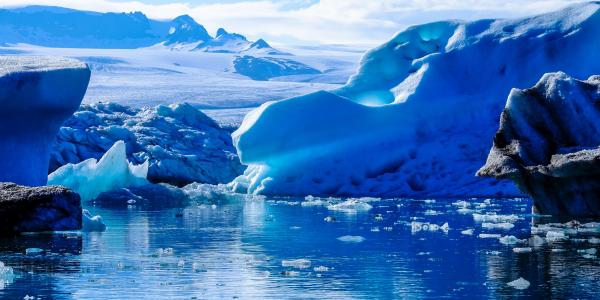EEPS Colloquium: Sam Kachuck
Too Hot to Handle, Too Cold to Hold: Intersecting physics and timescales in ice sheet evolution
The Antarctic Ice Sheet is losing mass at an accelerating pace, mass which is entering the ocean and raising sea levels across the globe. About half of this mass loss is due to ice flowing out over the ocean, where contact with the warm water melts it directly. The other half of this mass is lost as broken ice - icebergs that calve into the ocean, which float away and then melt. Though both of these processes have been identified as possible sources of dynamic instabilities in ice sheet evolution - the Marine Ice Sheet and Marine Ice Cliff Instabilities - most large scale numerical models have yet to reliably reproduce changes of observed calving front positions, resulting in significant uncertainties in projections of sea level into the next century. Furthermore, when ice enters the oceans, the earth’s viscoelastic mantle responds to the redistribution of mass, affecting the drivers of ice flow and the progression of these instabilities. I will discuss the challenges associated with incorporating solid-earth feedback and representations of mechanical failure of ice into numerical models of continental ice sheets, some solutions to them, and the effect these processes have on projections of sea levels.
EEPS Colloquia are made possible by the William C. Ferguson Fund.

